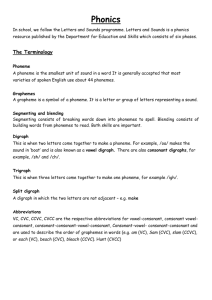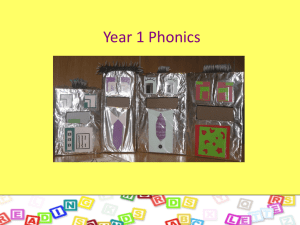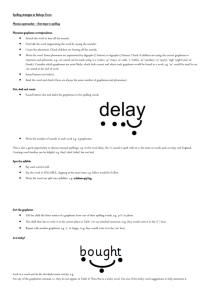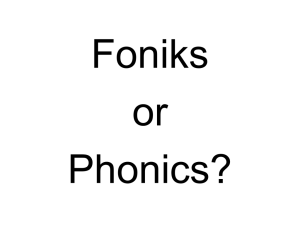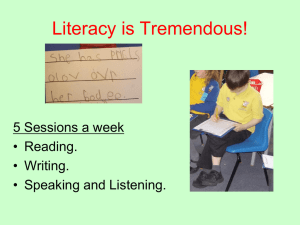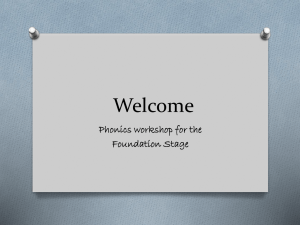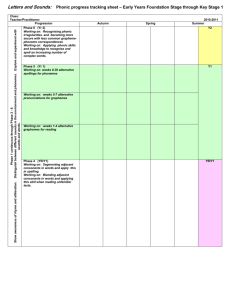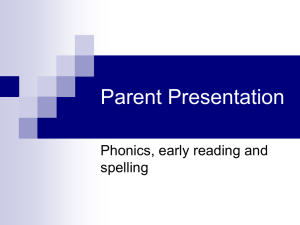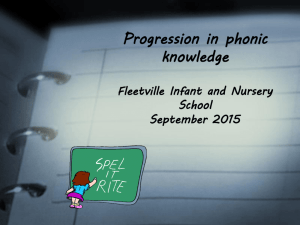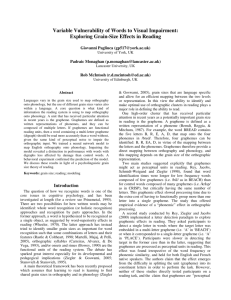Phonics Vocabulary Sheet
advertisement
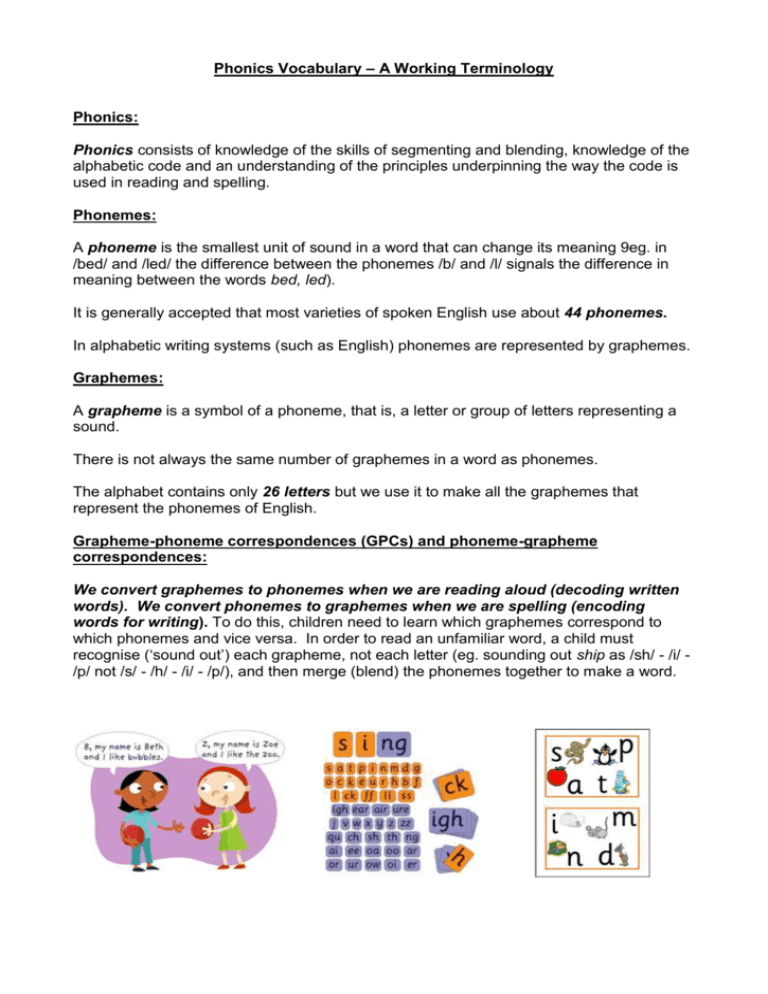
Phonics Vocabulary – A Working Terminology Phonics: Phonics consists of knowledge of the skills of segmenting and blending, knowledge of the alphabetic code and an understanding of the principles underpinning the way the code is used in reading and spelling. Phonemes: A phoneme is the smallest unit of sound in a word that can change its meaning 9eg. in /bed/ and /led/ the difference between the phonemes /b/ and /l/ signals the difference in meaning between the words bed, led). It is generally accepted that most varieties of spoken English use about 44 phonemes. In alphabetic writing systems (such as English) phonemes are represented by graphemes. Graphemes: A grapheme is a symbol of a phoneme, that is, a letter or group of letters representing a sound. There is not always the same number of graphemes in a word as phonemes. The alphabet contains only 26 letters but we use it to make all the graphemes that represent the phonemes of English. Grapheme-phoneme correspondences (GPCs) and phoneme-grapheme correspondences: We convert graphemes to phonemes when we are reading aloud (decoding written words). We convert phonemes to graphemes when we are spelling (encoding words for writing). To do this, children need to learn which graphemes correspond to which phonemes and vice versa. In order to read an unfamiliar word, a child must recognise (‘sound out’) each grapheme, not each letter (eg. sounding out ship as /sh/ - /i/ /p/ not /s/ - /h/ - /i/ - /p/), and then merge (blend) the phonemes together to make a word. Segmenting and blending: Segmenting and blending are reversible key phonic skills. Segmenting consists of breaking words down into their constituent phonemes to spell. Blending consists of building words from their constituent phonemes to read. Both skills are important. The skill of blending (synthesising) phonemes, in order, all through the word to read it, tends to receive too little attention in the teaching of phonics; it is very important to make sure that children secure blending skills. Digraphs and trigraphs (and four-letter graphemes): A digraph is a two-letter grapheme where two letters represent one sound such as ‘ea’ in seat and ‘sh’ in ship. A trigraph is a three-letter grapheme where three letters represent one phoneme (eg. ‘eau’ in bureau, and ‘igh’ in night). And by definition a four-letter grapheme uses four letters to represent one phoneme (eg. ‘eigh’ representing the /ai/ phoneme in eight and in weight). A split digraph has a letter that splits, ie. comes between, the two letters in the digraph, as in make and take, where ‘k’ separates the digraph ‘ae’ which in both words represents the phoneme /ai/. There are six split digraphs in English spelling: ‘a-e’, ‘e-e’, ‘i-e’, ‘o-e’, ‘u-e’, ‘y-e’, as in make, scene, like, bone, cube, type. A very few words have more than one letter in the middle of a split dgraph (eg. ache, blithe, cologne, scythe). Abbreviations: VC, CVC and CCVC are the respective abbreviations for vowel-consonant, consonantvowel-consonant, consonant-consonant-vowel-consonant, and are used to describe the order of graphemes in words (eg. am (VC), Sam (CVC), slam (CCV), or each (VC), beach (CVC), bleach (CCVC).
